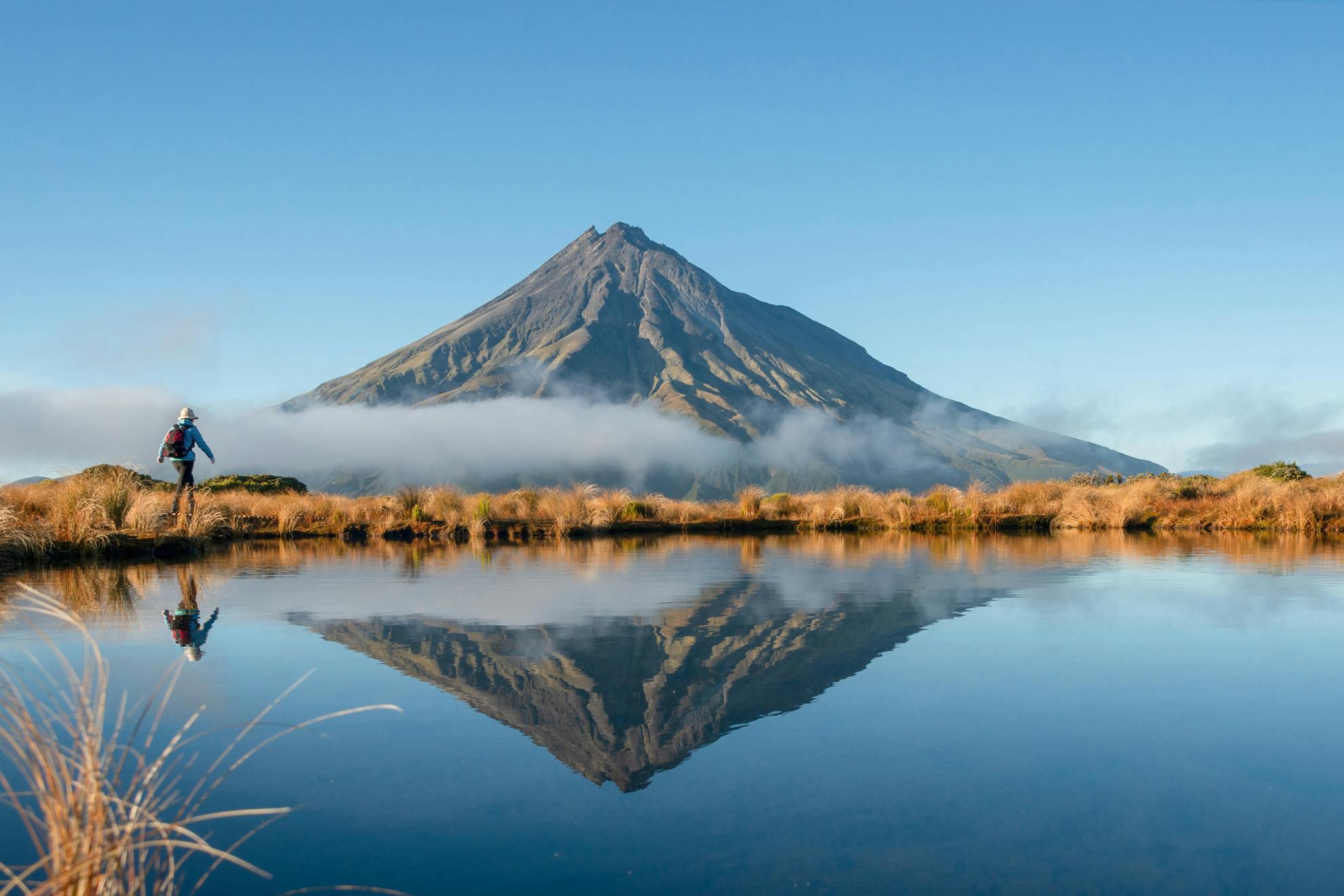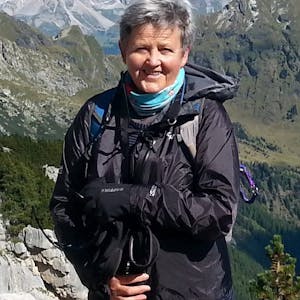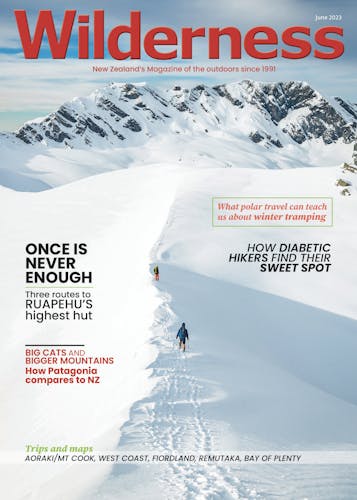Dave Rogers has spent a lifetime working on Taranaki Maunga and, as an iwi leader, was heavily involved in negotiating the Taranaki Maunga Redress Deed which has finally addressed massive grievances.
Dave Rogers, iwi leader and DOC senior ranger, visitor and heritage assets, was going through his work diaries when I showed up for our interview. He has a few, going back to 1975 when he quit his secure town job so he could work on the maunga on a government employment scheme. He became a permanent park employee after 18 months.
Not surprisingly, he’s seen huge changes in park use and management in the past 48 years, and in iwi recognition and, finally, reconciliation. In March, Ngā Iwi o Taranaki and the Crown initialled the historic Te Ruruku Pūtakerongo, Taranaki Collective Redress Deed.
Rogers (Te Atiawa, Ngāti Ruanui, Taranaki, Ngāti Mutunga and Ngāti Maniapoto (on his mother’s side) and English (fourth generation in Stratford on his father’s) has played a significant role in all of these.
There was no formal ranger qualification when he started his national park career. “My first experience was living in the huts, a week at a time, doing track and hut maintenance and trapping possums,” he says. “All learning was on the job. The rangers gave us training for things like climbing, avalanche rescue and first aid – all just practical stuff.”
For 15 years he was park foreman in charge of up to 40 staff, delivering field operations and biodiversity and recreation programmes as dictated by the park’s rangers. He eventually became frustrated by how little influence he had in the way the park was managed.
“I realised that all the decisions were made in strategic planning, so in 1987, when DOC was established, I made the decision to move from the field to the office.”
That led to another insight: that the department’s planning documents lacked any Māori perspective. “I wanted to get a Māori lens into the planning – I stress that it was ‘my’ Māori perspective, not ‘the’ Māori perspective.”
It didn’t take long for plans to come in from people throughout DOC, asking Rogers to add this perspective.
“It was clear that this was wanted, but at the time people didn’t know where to find it,” he says. “That’s when I saw how I could add value by aligning Māori values with those of conservation. In doing so it became obvious to me that they were going to achieve the same outcome, only in different ways. The environment affects everything – and our planning was all about protection and caring for all these special things and places.”
When Rogers also took on management of Northern Taranaki reserves, he was shocked to see picnic tables, rubbish bins and trees planted on historic Māori sites. “These were pā sites, burial grounds and places where blood had been spilt. They weren’t places to have food, and there were certain behaviours to be mindful of. The fact that these reserves were archaeological sites, protected for different reasons, had been ignored.”
Trees have since been removed from historic earthworks and rubbish bins and tables from inappropriate places. “Now the DOC guys, including Pākehā staff, do a karakia before they go onto these sites, and they don’t eat there – they go back to their vehicles for lunch.
“We do understand more now. Iwi are the department’s partners. Look at the Conservation Act and new management plans: the Māori view is included. And now with the Taranaki Maunga Redress Deed, iwi connections have become truly acknowledged and formalised.”
According to the settlement, iwi and the Crown have equal say in managing Taranaki Maunga. DOC will continue day-to-day management, according to national park legislation. The national park name becomes Te-Papa-Kura-o-Taranaki. The park, including Taranaki Maunga and surrounding peaks, will be vested in a legal person, named Te Kāhui Tupua.
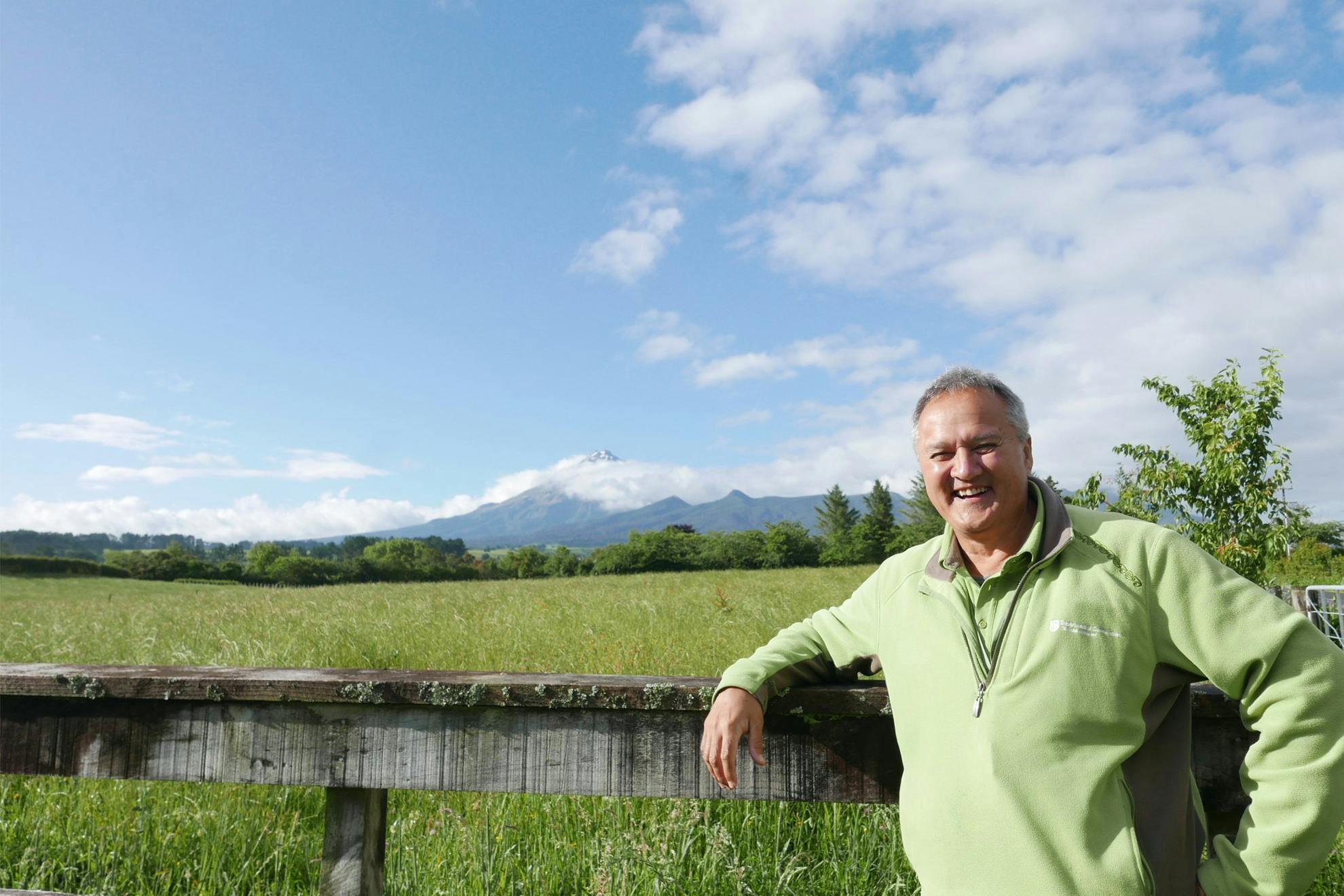
The Taranaki settlement has addressed massive grievances, says Rogers.
“After the wars of the 1800s, Taranaki iwi suffered the largest of all tribal land confiscations, including that of our revered ancestor, Taranaki Maunga,” he says.
Wearing both his Crown (DOC) and iwi hats, Rogers was uniquely placed for the settlement negotiations.
His iwi involvement began when he was just 16, with Ngāti Mutunga. “My maternal grandfather did a lot of work to identify the issues around the loss of our lands. When he died my mother took over that work, then I picked it up.
“For 15 years I was consumed by the treaty negotiations throughout Taranaki and used all my annual leave to attend hui. I was involved in four of the eight different iwi settlements, and through my work with the Crown had the benefit of sitting on both sides of the table.
“My main role was to look at all the lands iwi had interests in, and what was now happening on that land. It was incredibly rewarding but challenging. At one point I was on 11 different Māori groups and had a heart attack. I’ve stepped back now, although as a past chair of the local marae I still get called into Ngāti Ruanui.”
Rogers shows no outward animosity about past wrongs. “We’ve got to be able to close those grievances. We can’t have another generation living in that bitterness; we need to put a mark in the ground and move forward. Don’t forget it. But move forward.”
Meanwhile, there are new challenges facing park management – notably a new breed of visitor, says Rogers.
“The bulk of our park visitors now are short-stop travellers at the road ends. The three/four day tramp is history; a long trip for them is probably an overnighter. I don’t think they appreciate the park the way we’d like them to. They want that ‘wow’ experience – clean toilets, car parking and a café.”
The response has been to develop the Taranaki Crossing. This has entailed a major track upgrade from Dawson Falls, in the south, across the eastern Taranaki slopes to link with the Pouākai Crossing and Mangorei Road, in the north. It has been funded by the Provincial Growth Fund.
That funding was a blessing, says Rogers. “Ever since I’ve been in the park we’ve had more assets than resources to look after them, and we’ve always had to consider priorities.
“The reality is the northern and eastern areas are where the bulk of our use is, so most resources are going there. On the other side of the maunga we get fewer than 500 people going around each year, and about half of them come in to the huts from the road ends.”
In April DOC announced the closure of the Bells Falls to Kahui Hut section of the Round the Mountain Track due to severe storm damage and erosion. The closure will be reviewed next summer.
DOC will, however, replace Lake Dive Hut, which burned down in 2020, says Rogers.
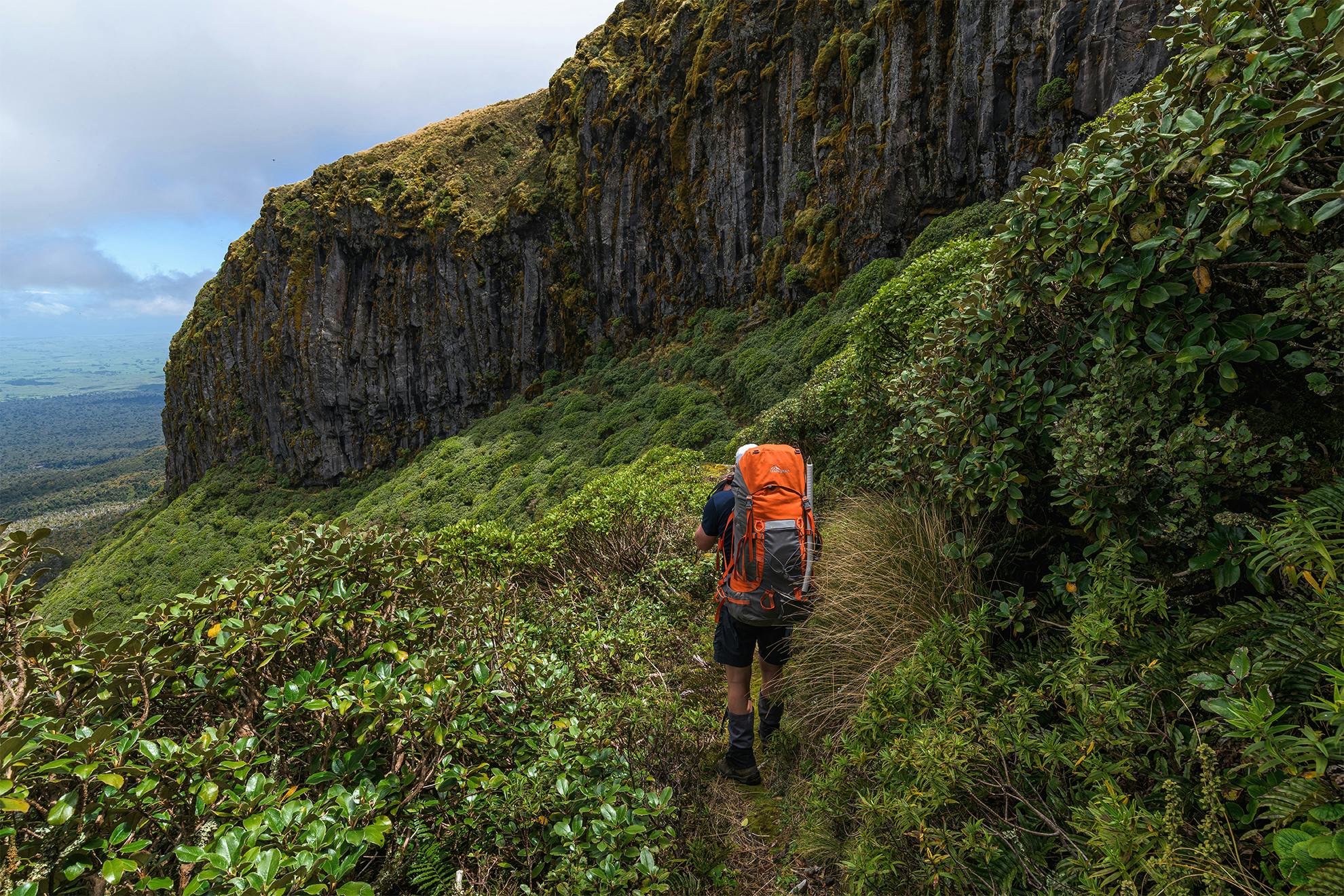
“It was a local gem. It made a nice circuit from Dawson Falls, and since the hut burned down many people have been camping at the site.”
Protecting the natural values around Pouākai Tarn, the fragile wetland area that is now a social media drawcard for the tarn’s reflected views of Taranaki Maunga, continues to present challenges. Pre-Covid, annual visitor numbers there went from 3000 people to 30,000 within five years.
“We could see the impacts on the whole area. People camped up there for days to get their photos because they also wanted to be there for the sunrise and sunset,” says Rogers.
The Covid pause was welcome but is now over.
“The biggest issue now is waste from the hut toilets. Our helicopter budget is used up taking out waste and yet we are looking at putting more toilets up there. We have plans for a new, 38-bunk hut (the present hut has 16 bunks). That was part of the funding package and is currently in the design process.”
The new hut raises questions for Rogers. “Should we be encouraging even more people? In fact, could we move away from having any huts in this park? Nothing is very far from a road end,” he muses.
“Provincial Growth funding is about regional economics, attracting people and their money to Taranaki. But is this something we should be doing in our conservation role? Personally, I would have been very happy with the same size hut.”
The visitor environment has changed, he says. “Our population has changed and a lot of park users now are not outdoor people like the traditional Kiwi tramper. Many have a lot to learn. We also have overseas visitors who get caught out. They don’t understand what rainfall of seven to ten metres a year looks like. Yet they are here and are as entitled as anyone to participate in and benefit from the park.
“We want people to gain appreciation for this place and have enjoyable, memorable and safe experiences, so we put out a lot of information about safety. Some Kiwi trampers think this is overdone but we have to do it.
“Taranaki Maunga is dynamic. We’re trying to manage risks to people; we cannot manage the mountain.”
Rogers feels close to retirement. Whether or not he’s working on the maunga, chances are you’ll find him up there in the subalpine zone. When I ask if he has a favourite spot on the maunga, he smiles.
“Anywhere in the herb fields above the shrub line. I love the smell of the herbs, the khaki colours, the carpet matting, and I love it when the plants are flowering. I could sit up there all day.”





